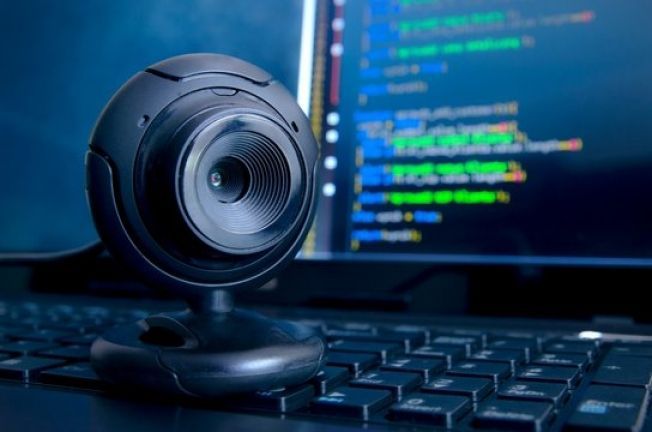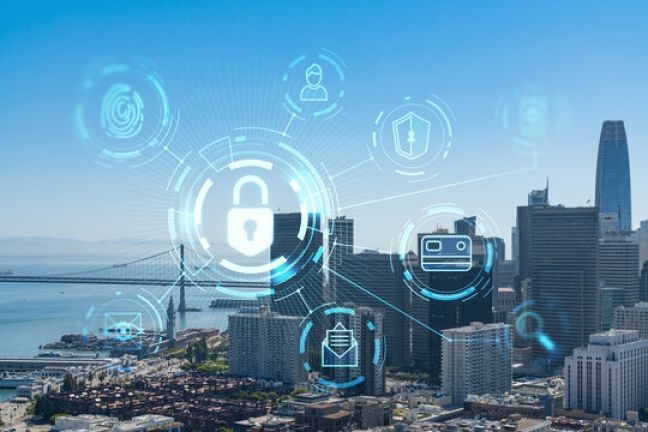Importance of Counter Surveillance in Today’s Digital World
Introduction
In this blog, we will explore the importance of Counter Surveillance in Today’s Digital World. We’ll cover the different types of surveillance threats. That individuals and organizations face and the counter-surveillance measures that can be used to protect against them.
From encryption to anti-spyware software to simple awareness of potential threats. We’ll provide you with the information and tools you need to take control of your online presence. So sit back, relax, and get ready to become a counter-surveillance expert.
Welcome to the digital age, where technology has made it easier for individuals and organizations to keep tabs on each other. From governments using CCTV cameras and facial recognition software to cybercriminals using malware and spyware to steal sensitive information, surveillance has become a ubiquitous feature of modern life. But what if you could turn the tables and take control of the surveillance game? That’s where counter-surveillance comes in.
Countersurveillance refers to measures taken to prevent or thwart surveillance activities by others. In today’s digital world, it has become more important than ever to take steps to protect oneself from unwanted surveillance and maintain privacy.
But don’t worry, you don’t need to be a spy to understand the basics of counter-surveillance. With a little bit of knowledge and some helpful tools, anyone can take control of their digital footprint.
What is Counter Surveillance?
Counter surveillance refers to the practice of detecting and preventing surveillance activities, typically by government agencies or other entities. Put simply, it means taking steps to ensure that you are not being monitored or spied on without your knowledge or consent.
In today’s digital age, counter-surveillance has taken on a whole new level of importance. With the rise of technology and the internet. It has become easier than ever for individuals and organizations to monitor others. This can take many forms, from tracking your online activity to intercepting your phone calls.
To protect yourself from surveillance, it is essential to understand the different types of surveillance that may be used against you. Physical surveillance involves following or observing you in person. While electronic surveillance may include intercepting your emails, text messages, or other forms of digital communication.
One of the most effective ways to counter surveillance is through the use of encryption. Encryption involves converting your information into code, which can only be read by those who have the encryption key. This makes it much more difficult for others to intercept and read your data.
Another important aspect of counter-surveillance is situational awareness. This means paying attention to your surroundings and being aware of any potential threats or suspicious behavior. For example, if you notice someone following you or acting strangely, it’s important to take steps to protect yourself and report the incident to the authorities.
In today’s digital world, the need for counter-surveillance has become more pressing than ever before. With the widespread use of technology and the internet, it has become increasingly easy for individuals and organizations to monitor and spy on others. From government agencies to private companies, the potential for surveillance is vast and varied.
The need for counter-surveillance arises from the basic human right to privacy. We all have the right to keep our personal lives and information private, and surveillance can violate that right. It can also be used for nefarious purposes, such as blackmail, espionage, or other criminal activities.
Counter-surveillance is essential for individuals and organizations who want to protect their privacy and security. This involves taking steps to detect and prevent surveillance activities, such as using encryption and being aware of your surroundings.
One of the most common forms of surveillance is electronic surveillance, which involves intercepting digital communications like emails and text messages. To prevent this, encryption can be used to scramble the information, making it unreadable to anyone who does not have the encryption key.
Physical surveillance is another common form of surveillance, which involves following or observing someone in person. This can be prevented by being aware of your surroundings and taking steps to avoid being followed or monitored.
The need for counter-surveillance is not just limited to individuals. Businesses and organizations also have a responsibility to protect their sensitive information from potential threats. This may include using secure communication channels and implementing strict security protocols to prevent unauthorized access.
Types of Counter-Surveillance Measures

Counter-surveillance measures are an essential component of protecting one’s privacy and security in today’s digital age. There are various types of counter-surveillance measures that can be employed to detect and prevent surveillance activities.
One of the most commonly used counter-surveillance measures is encryption. Encryption involves the use of algorithms to convert sensitive information into an unreadable format. This makes it difficult for unauthorized parties to intercept and access the information. Encryption is commonly used for securing emails, messaging apps, and other digital communication channels.
Another important counter-surveillance measure is the use of VPNs or Virtual Private Networks. A VPN allows users to connect to the internet through a secure, encrypted connection. This means that all internet activity is kept private and protected from potential surveillance.
Physical security measures are also important for counter surveillance. This may include installing security cameras or alarms, or hiring security personnel to monitor suspicious activity.
In addition, situational awareness is crucial for detecting potential surveillance activities. This means being aware of your surroundings and taking note of any unusual or suspicious behavior. For example, if you notice someone following you or a car that seems to be parked in the same spot for an extended period, it may be a sign of surveillance.
Counter-surveillance measures may also involve conducting regular security audits to identify potential vulnerabilities in your system or organization. This can help to prevent unauthorized access and mitigate potential threats.
In conclusion, many different types of counter-surveillance measures can be employed to protect your privacy and security. From encryption and VPNs to physical security measures and situational awareness, it’s important to take a multi-faceted approach to counter surveillance.
By staying vigilant and implementing proactive measures, you can ensure that your personal information remains private and secure.
Risks of Not Implementing Counter-Surveillance Measures
In today’s digital world, the risks of not implementing counter-surveillance measures can be significant. Failing to take steps to protect your privacy and security can result in a range of negative consequences, including loss of sensitive information, identity theft, and even physical harm.
One of the most significant risks of not implementing counter-surveillance measures is the potential for data breaches. Hackers and other malicious actors can gain access to sensitive information such as personal identification, financial records, and trade secrets. This information can be used for identity theft, financial fraud, or corporate espionage.
In addition to data breaches, there is also the risk of physical harm. Surveillance can be used by stalkers or abusive partners to monitor their victims, which can result in physical harm or even death. In some cases, government agencies or other organizations may use surveillance to monitor activists or other individuals, which can put their safety at risk.
Not implementing counter-surveillance measures can also result in a loss of trust. If an individual or organization is seen as careless with sensitive information or fails to take adequate measures to protect privacy and security, it can damage its reputation and credibility.
Furthermore, failing to implement counter-surveillance measures can lead to legal and regulatory consequences. Depending on the type of data and the industry, there may be legal requirements for securing and protecting sensitive information. Failure to comply with these regulations can result in hefty fines, legal liability, and damage to the reputation of the organization.
In conclusion, the risks of not implementing counter-surveillance measures can be severe. From data breaches and identity theft to physical harm and legal consequences, the potential negative impacts are significant. By taking proactive steps to protect privacy and security, individuals and organizations can mitigate these risks and ensure that their sensitive information remains private and secure.
Best Practices for Counter-Surveillance

When it comes to counter-surveillance, several best practices can be employed to enhance privacy and security. These practices involve a combination of technical, physical, and behavioral measures that are designed to detect and prevent surveillance activities. Here are some of the best practices for counter-surveillance:
- Use Encryption : Encryption is an essential tool for protecting sensitive information from unauthorized access. It involves the use of algorithms to scramble data, making it unreadable to anyone who doesn’t have the key to decrypt it.
- Use VPNs : A Virtual Private Network (VPN) is another tool that can be used to protect privacy and security. A VPN creates a secure, encrypted connection between your device and the internet, preventing third parties from intercepting your online activity.
- Use Strong Passwords : Strong passwords are an important part of protecting your digital privacy. Avoid using easily guessable passwords and consider using a password manager to generate and store strong, unique passwords for each account.
- Conduct Regular Security Audits : Regular security audits can help identify potential vulnerabilities in your system or organization. By regularly reviewing your security measures and making necessary updates, you can stay ahead of potential threats.
- Monitor Your Online Presence : Be mindful of the information you share online, and monitor your online presence regularly. Review your social media accounts and other online profiles to ensure that you are not inadvertently sharing sensitive information.
- Be Aware of Your Surroundings : Situational awareness is crucial for detecting potential surveillance activities. Be mindful of your surroundings and take note of any unusual or suspicious behavior. This can help you detect potential surveillance and take necessary action.
- Use Physical Security Measures : Physical security measures, such as installing security cameras or alarms, restricting access to sensitive areas, or hiring security personnel, can be an effective way to prevent unauthorized access and detect potential threats.
Conclusion
In conclusion, it is clear that counter-surveillance is crucial in today’s digital world. With the increasing prevalence of surveillance technology and the growing threat of cyber attacks, individuals and organizations need to take proactive steps to protect their privacy and security.
We have seen that counter-surveillance measures involve a combination of technical, physical, and behavioral measures, such as encryption, VPNs, strong passwords, and physical security measures. By implementing these best practices, individuals and organizations can stay ahead of potential threats and protect their sensitive information from malicious actors.
Moreover, counter-surveillance measures can help ensure that individuals and organizations are compliant with legal and regulatory requirements for data protection and security. Failing to comply with these regulations can result in hefty fines, legal liability, and damage to the reputation of the organization.
In addition to protecting privacy and security, counter-surveillance measures can also help promote trust and credibility. By demonstrating a commitment to protecting sensitive information, individuals and organizations can build trust with their customers, clients, and stakeholders.
In today’s digital world, counter-surveillance is no longer an optional extra. It is an essential part of protecting privacy and security. By taking proactive steps to implement counter-surveillance measures. The risks of monitoring and cyberattacks can be reduced, and people and organizations can be sure that their private data is safe from nefarious individuals.








